All products featured are independently chosen by us. However, SoundGuys may receive a commission on orders placed through its retail links. See our ethics statement.
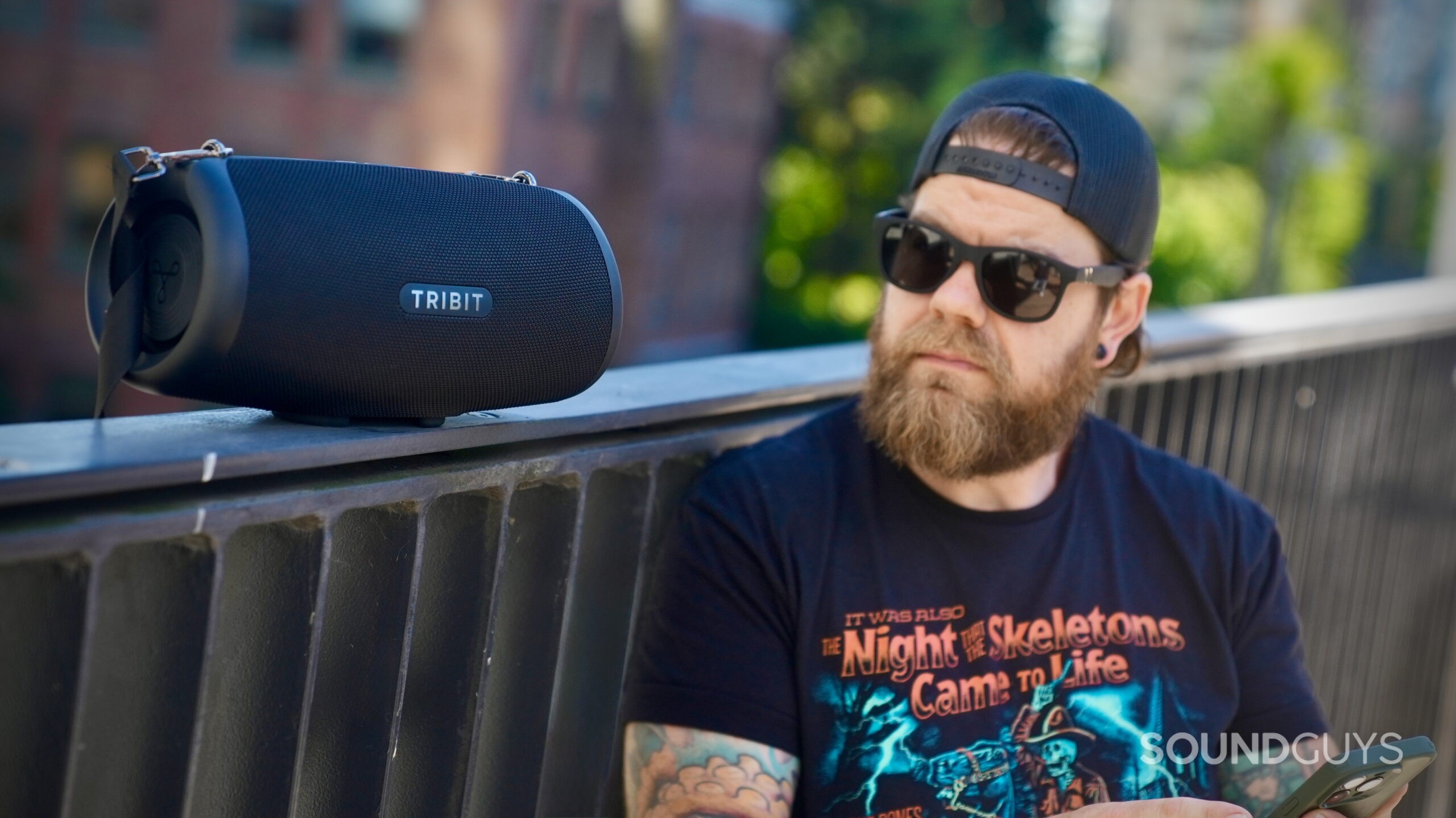

Tribit StormBox Lava review: Xtreme 4 vibes without the JBL price
August 2, 2025


Tribit StormBox Lava
Weight: 2,300.0g
Considering its design, the Tribit StormBox Lava clearly takes a page out of the JBL Xtreme 4’s playbook. It aims to deliver the same big sound, but at a third of the price. On top of that, Tribit throws in extras like a 10-band EQ, USB charge-out, and an aux input. Sounds like a sweet deal, but can this budget-friendly speaker really bring the bass? Let’s dig into it in this Tribit StormBox Lava review.
Editor’s note: This article was published on August 2nd, 2025, and is the first version.
The Tribit StormBox Lava is built for anyone who wants a rugged Bluetooth speaker with enough volume for group listening or outdoor hangouts without breaking the bank.
What’s it like to use the Tribit StormBox Lava?
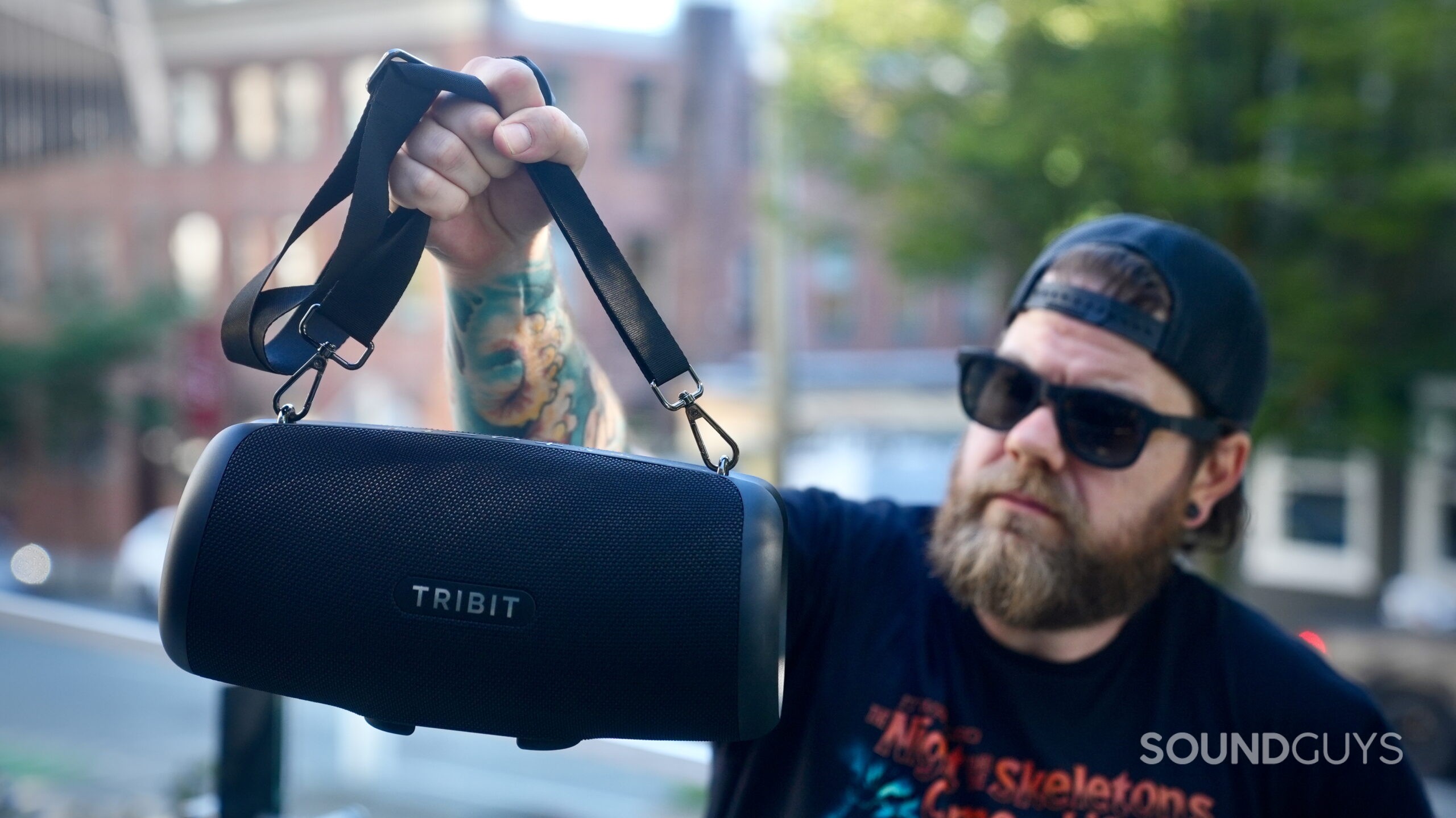
As mentioned, the Tribit StormBox Lava is a clear take on the JBL Xtreme 4. It has the same stereo driver layout, football-like shape, weight, and clip-on shoulder strap attachment. It’s even wrapped in a durable fabric like the Xtreme 4, though the end caps protecting its passive radiators are plastic instead of rubber. It doesn’t quite deliver the same premium build quality you get with the Xtreme 4, but let’s remember it costs about a third as much.
That said, the StormBox Lava has an IP67 protection rating, meaning it’s still dustproof and waterproof. It’s great for the beach or backyard, and unlike the Xtreme 4, it also includes a 3.5mm aux input and a USB-A courtesy outlet to top up your phone on the go. A dual USB-C in and out setup would be ideal, but again, this is a budget-friendly speaker.
Of course, you can pair a second StormBox Lava for true wireless stereo performance. The Lava also supports Tribit’s Party Mode, which lets you link over 100 other Tribit speakers for synchronized mono playback. If you happen to know enough people with enough Tribit speakers to make that happen, send me an invite. I’d love to hear what it sounds like. Lastly, Tribit includes a shorter carrying handle along with the adjustable shoulder strap. All in all, the StormBox Lava offers an impressive feature set for the price.
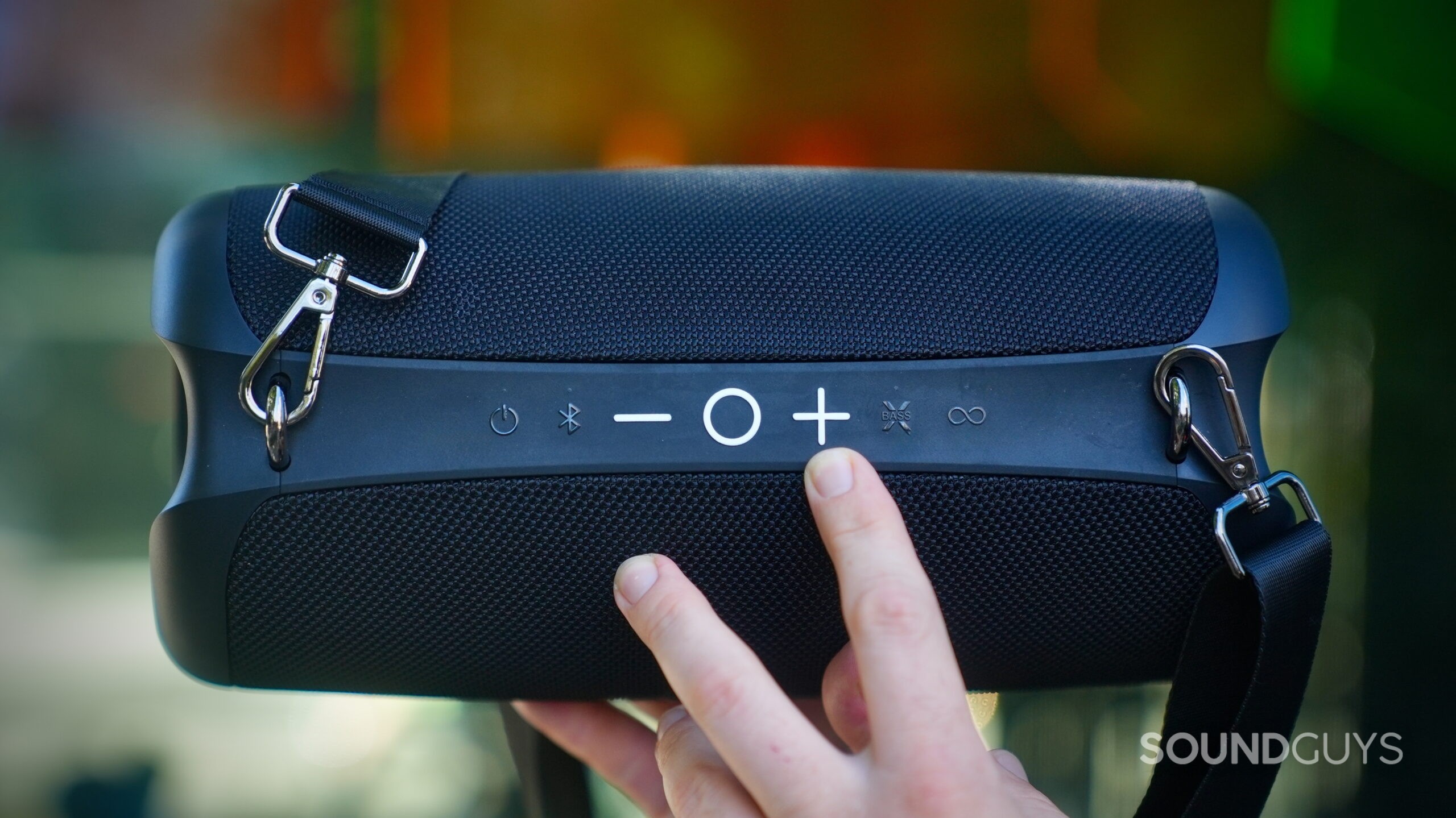
The Tribit StormBox Lava operates via physical controls. Below is a breakdown of how they perform.
| Action | Power button | Bluetooth button | Volume - | Play / Pause button | Volume + | Xtra Bass | TWS / Party Mode |
|---|---|---|---|---|---|---|---|
| Action 1x press | Power button Power on | Bluetooth button Enter pairing mode | Volume - Volume down | Play / Pause button Play / Pause / Answer call | Volume + Volume up | Xtra Bass Toggle bass boost | TWS / Party Mode |
| Action 2x presses | Power button | Bluetooth button | Volume - | Play / Pause button Next track | Volume + | Xtra Bass | TWS / Party Mode |
| Action 3x presses | Power button | Bluetooth button | Volume - | Play / Pause button Previous track | Volume + | Xtra Bass | TWS / Party Mode |
| Action Press and hold | Power button | Bluetooth button | Volume - | Play / Pause button Voice assistant / Reject call | Volume + | Xtra Bass | TWS / Party Mode |
What are the key features of the Tribit StormBox Lava?
The Tribit app is worth downloading and using with the StormBox Lava, specifically for its EQ options. There are a variety of presets to choose from, including Xtra Bass for your bassheads out there, but I was most excited to find a 10-band custom EQ. This means you can really personalize the sound of the StormBox Lava, including cranking up those low-end frequencies to taste, and saving a few of those custom presets as well.
Of course, you’ll also need the app to tweak some of the speaker’s default settings, like the auto-off timer, and to access firmware updates.
How does the Tribit StormBox Lava connect?
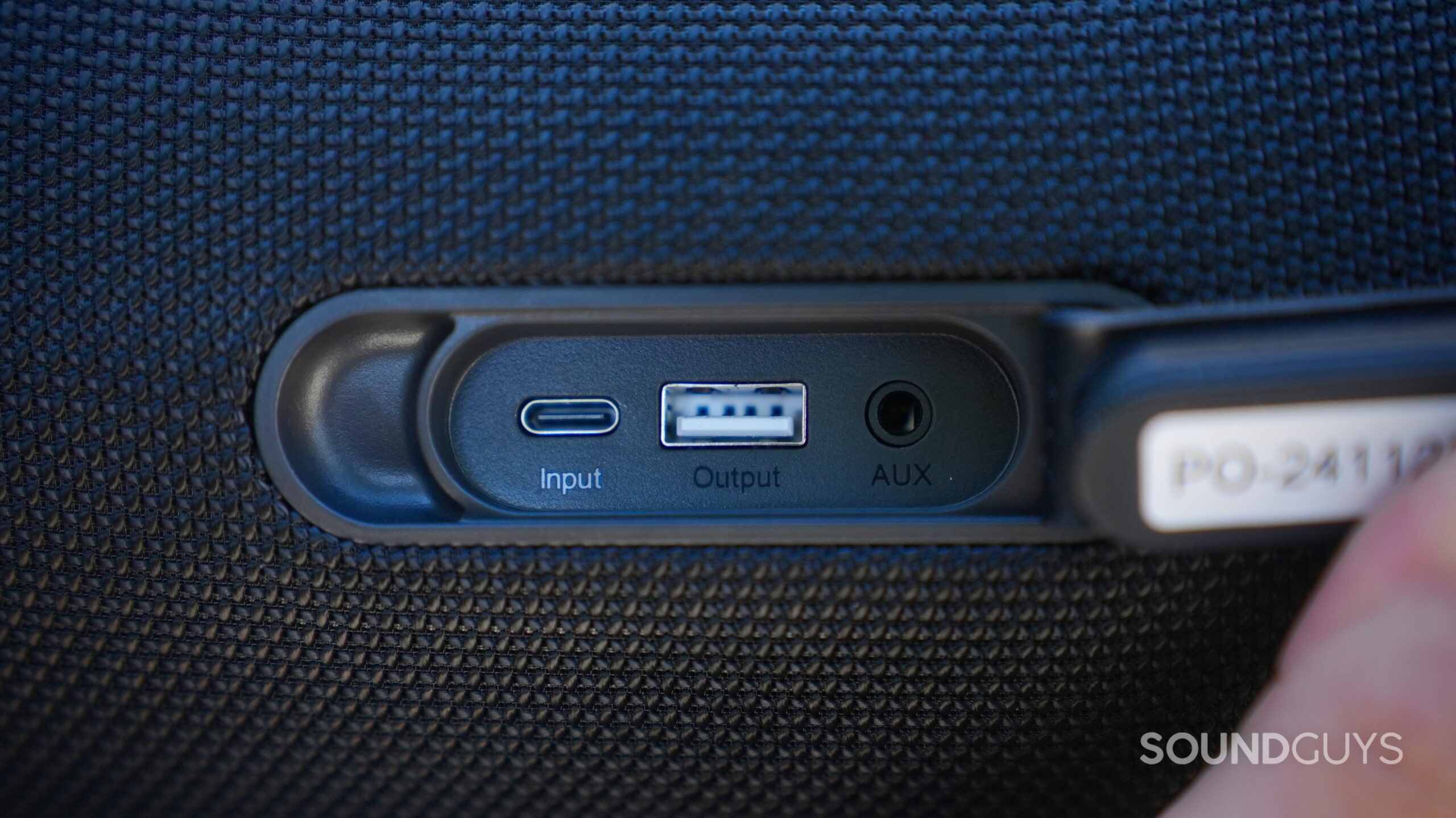
The Tribit StormBox Lava connects to your device wirelessly via Bluetooth 5.4. It supports multipoint if you want to connect to two devices and switch between them seamlessly. It also supports both SBC and AAC codecs. Additionally, the Lava includes a 3.5mm aux input, a feature that’s becoming increasingly rare.
The Tribit StormBox Lava connects to your device via the usual steps, as outlined below.
- Power on the StormBox Lava and press the Bluetooth button.
- Open Bluetooth settings on your phone
- Select “StormBox Lava”
- Download and install the Tribit app to take full control of the Tribit StormBox Lava
How long does the Tribit StormBox Lava’s battery last?
In our testing, with a consistent music source playing at 80dB measured from one meter away, the StormBox Lava lasted 24 hours, 59 minutes, and 27 seconds. That exceeds the company’s 24-hour battery claim. Nice one!
How does the Tribit StormBox Lava sound?
The Tribit StormBox Lava offers a good amount of output for larger gatherings, with plenty of low-end presence that you can further modify thanks to the Tribit app.
Multi-Dimensional Audio Quality Scores (MDAQS)
The chart below shows how the sound of the Bose SoundLink Max was assessed by the Multi-Dimensional Audio Quality Score (MDAQS) algorithm from HEAD acoustics.
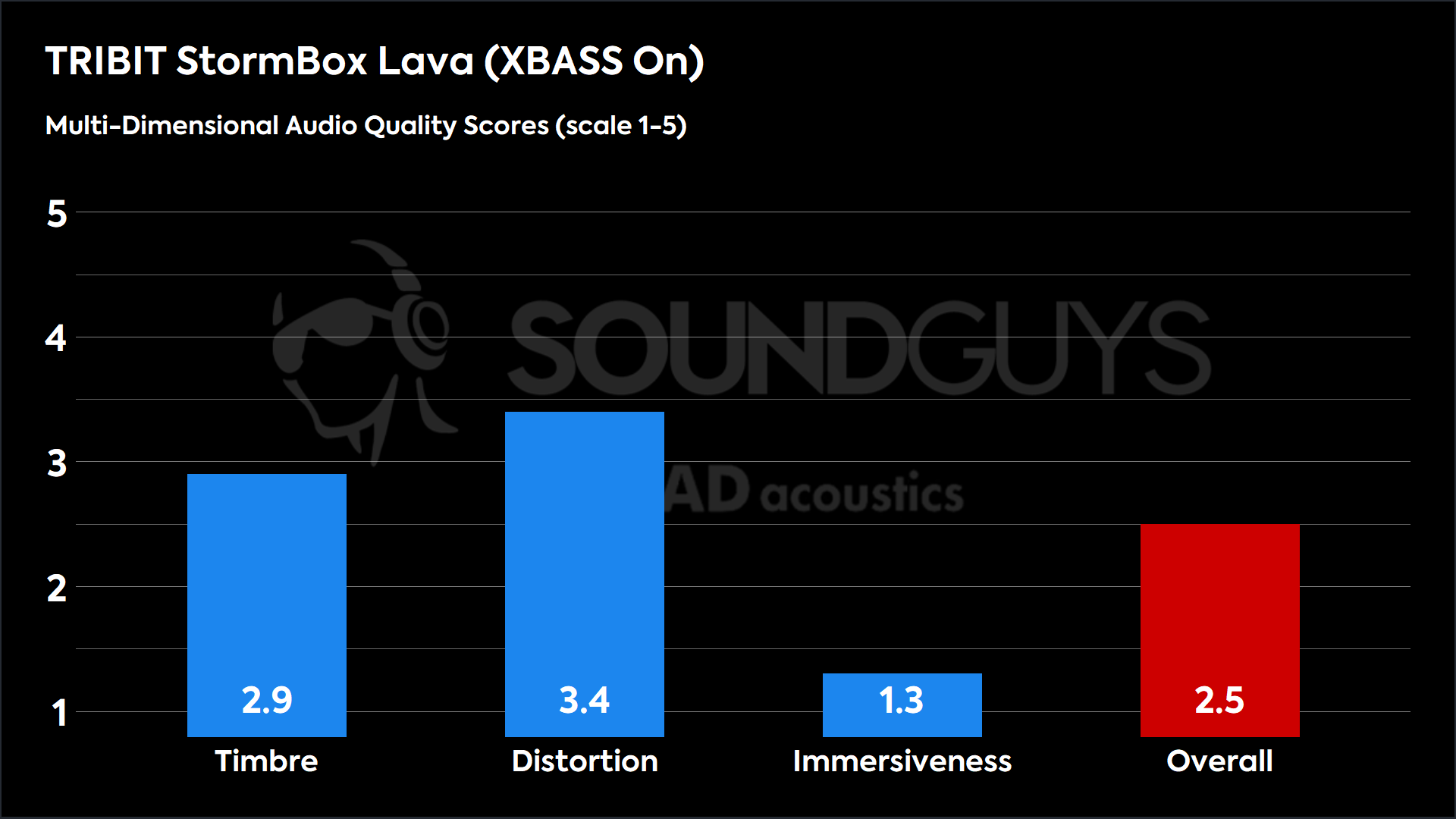
With XBASS on, the Tribit StormBox Lava pulls decent results, scoring 3.4 in distortion and 2.9 in timbre. Its 1.3 immersiveness score reflects a narrow, directional sound, which is typical for Bluetooth speakers since most in this category are designed that way. It hits hard in the bass and gets loud, but doesn’t offer much sense of left-to-right separation. Still, a 2.5 overall score is totally respectable for a portable Bluetooth speaker.
Timbre (MOS-T) represents how faithfully the speaker reproduces the frequency spectrum and temporal resolution (timing information).
Distortion (MOS-D) represents non-linearities and added noise: higher scores mean cleaner reproduction.
Immersiveness (MOS-I) represents perceived source width and positioning, which is how well virtual sound sources are defined in three-dimensional space.
See here for an explanation of MDAQS, how it works, and how it was developed.
Reviewer’s notes
Editor’s note: this review uses a hover-enabled glossary to describe sound quality based on a consensus vocabulary. You can read about it here.
Yep! The StormBox Lava offers a built-in microphone, so you can take phone calls or access your voice assistant on the go.
Should you buy the Tribit StormBox Lava?
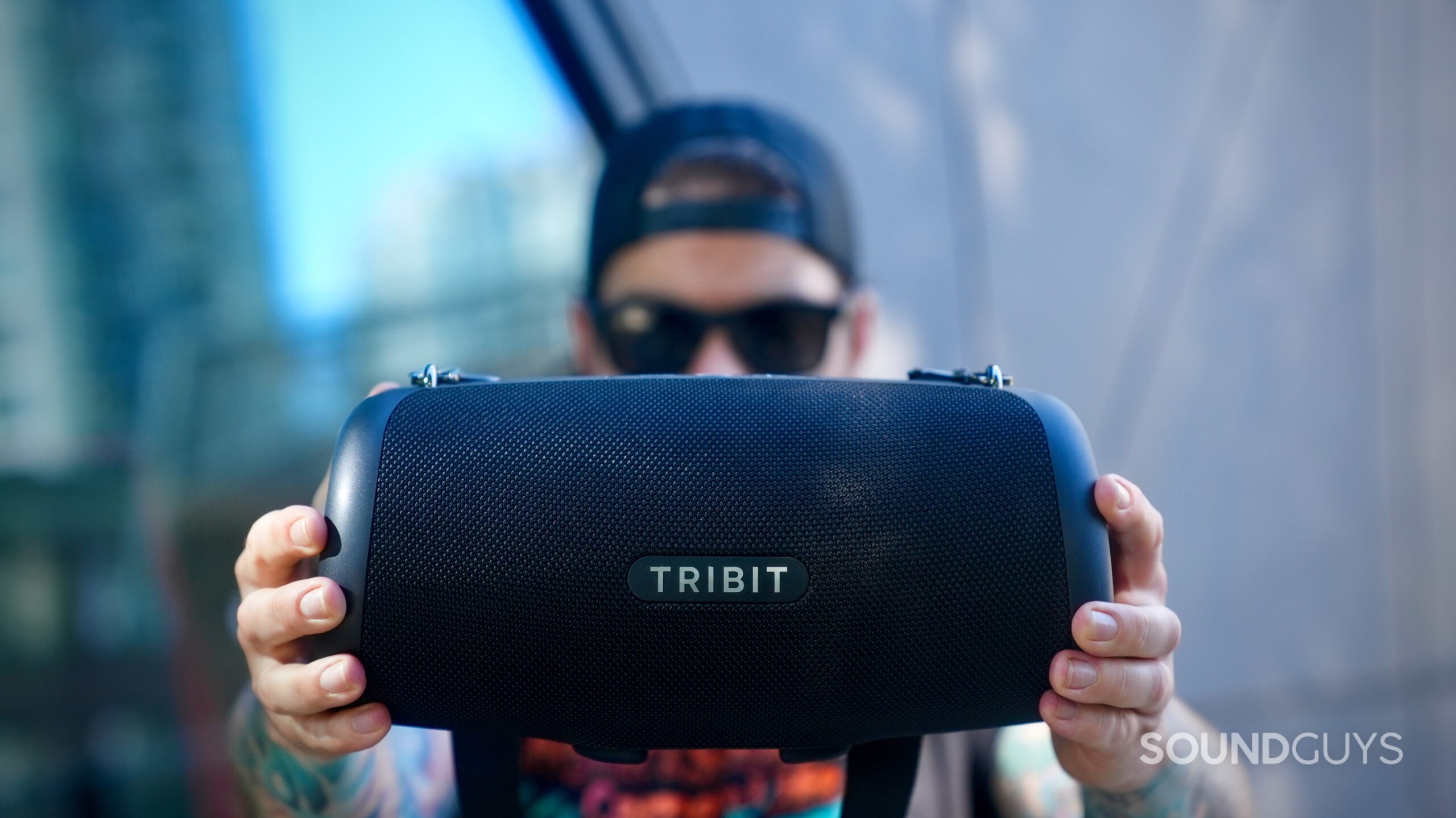
For $139, the Tribit StormBox Lava is absolutely worth the price. It delivers plenty of bass, offers a solid range of EQ options, and includes nice extras like USB charge-out and aux-in support. While it may not provide the same premium build quality as more expensive options, it’s still well protected from the elements, and there’s a lot of value to be had.
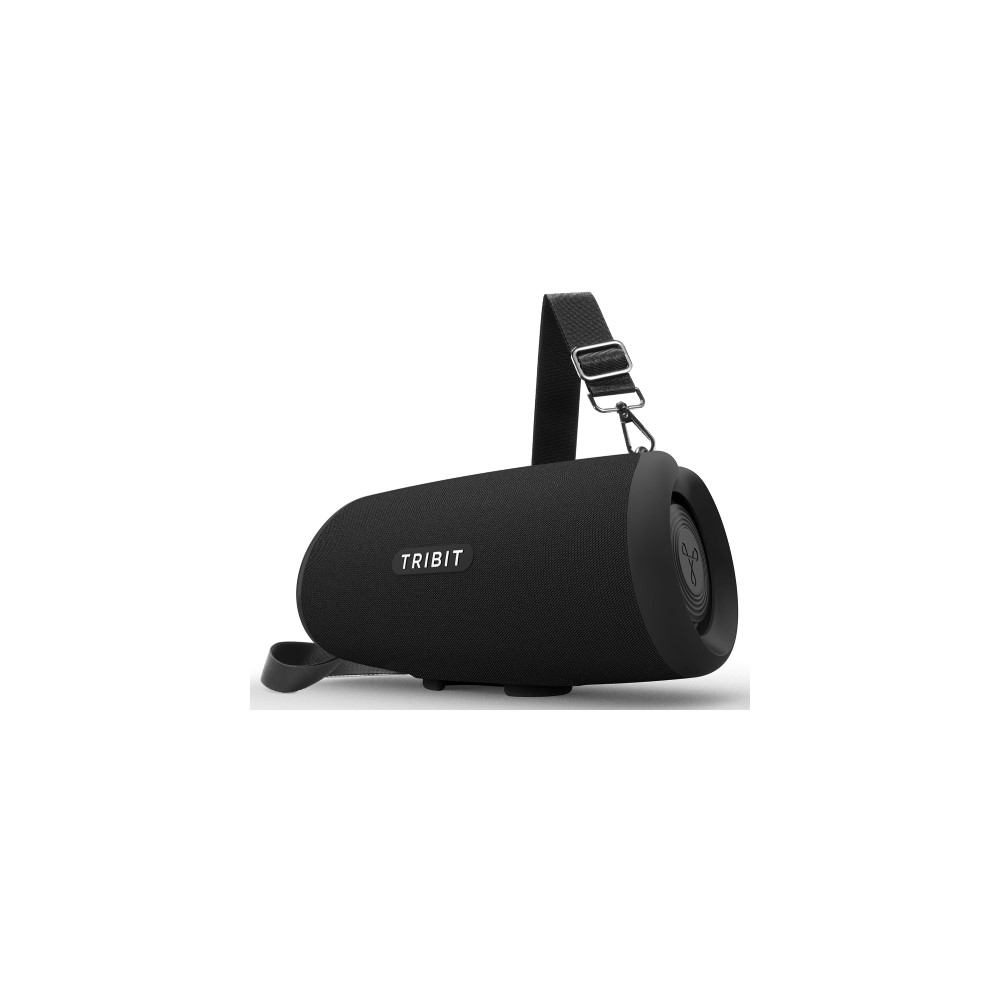

What should you get instead of the Tribit StormBox Lava?
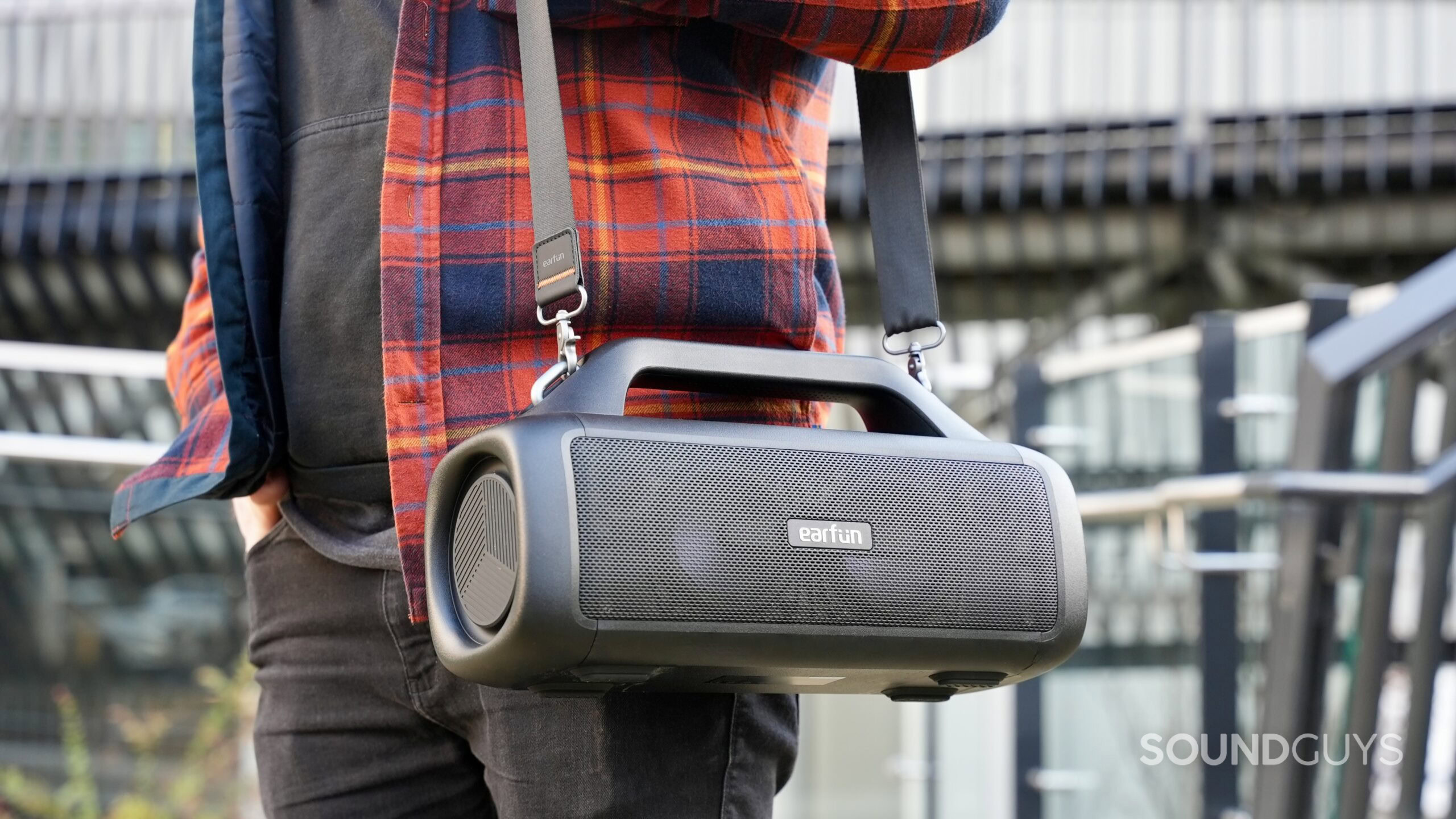
If your priority is getting plenty of boom on a budget, the EarFun UBOOM X is also worth a look. It offers an IP67 rating, a range of EQ options, and built-in RGB lights behind the grille, making it party-ready without obliterating your bank account. Snag one for $159.99 at Amazon.
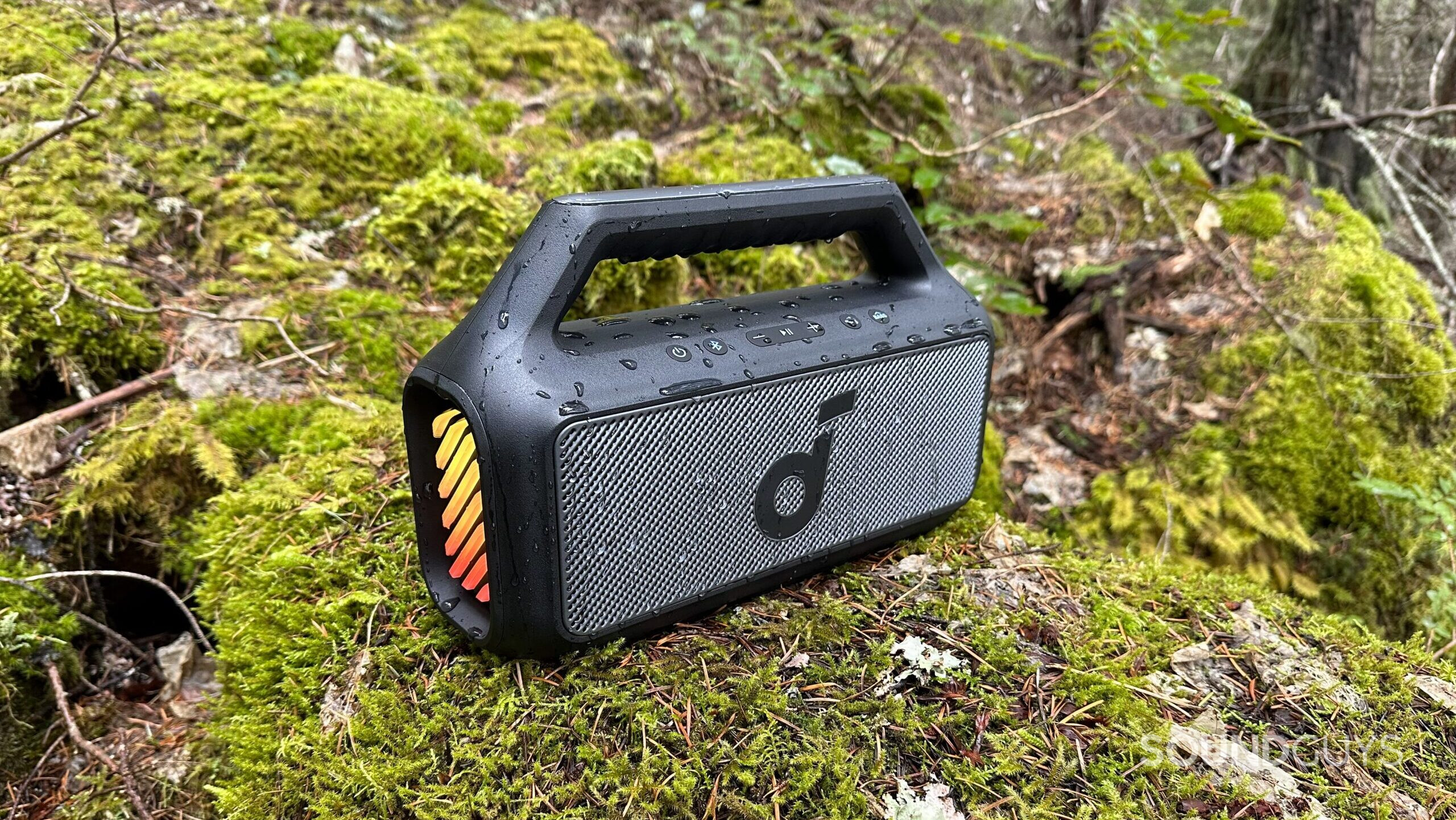
The Soundcore Boom 2 is also worth a look. Like the Lava, it pushes 80W of output and supports 2.1 stereo playback. While it doesn’t offer any dust resistance—it’s only IPX7-rated—it’s designed to float and gets plenty loud for outdoor listening. And of course, there’s the built-in LED lighting on its passive radiators, which adds a little something extra to your next gathering. Find one for $129.99 at Amazon.
Frequently asked questions
Yes, you can use the Tribit StormBox Lava while charging.
The Tribit StormBox Lava isn't designed for a TV, but you can technically use it if your TV offers a Bluetooth or aux connection.
No, the Tribit StormBox Lava does not offer Alexa or Google Assistant, but it does offer a built-in mic if you want to access your phone's voice assistant.
Thank you for being part of our community. Read our Comment Policy before posting.